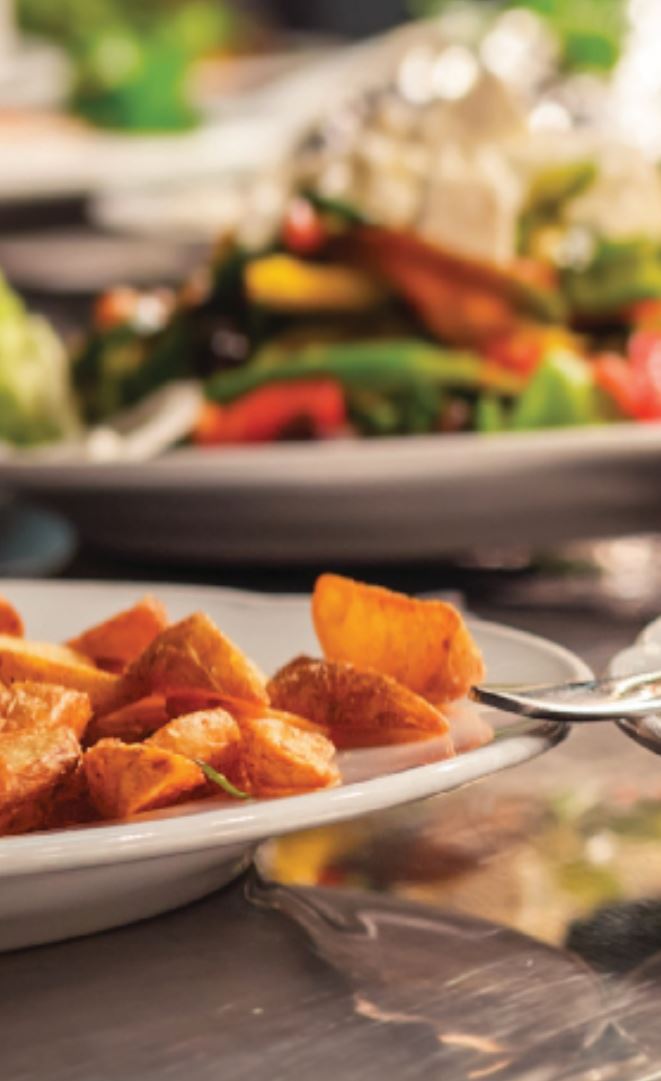Restaurant inventory management is a procedure to monitor the ingredients and supplies you have for shifts in real time, and it also helps you make more economical food, beverage, and supply orders. Effective inventory management is essential to your day-to-day operations and long-term goals. Below we provide fundamental tips to manage your restaurant inventory, and we show you how to take inventory. We also explain how restaurant inventory is tied to your bottom line.
7 Restaurant Inventory Management Tips
Managing your supply and food inventory requires diligence, but when done correctly, you can minimize food waste and save money. Below we take you through 7 tips to ensure successful inventory management.
1. Utilize a POS System, and Take Inventory by Hand
A POS system provides numerous advantages, including data forecasting, order planning reports, integrated accounting, and automated inventory tracking based on customer orders. However, it does not account for other sources of inventory loss, such as spoilage, spillage, inefficient or incorrect food or drink preparation process, customer complaint resolutions, and theft. A POS system is unable to take into account the aforementioned scenarios unless the information is put in manually. So, taking inventory by hand ensures a more well-rounded, accurate report.
2. Have the Same Staff Member(s) Track Inventory
Designate a few people to take your inventory, such as the managers and the chef. This will make it easier to identify inconsistencies. Also, since these employees will consistently be taking inventory, they will be able to understand the patterns and nuances involved in your unique inventory over time. To ensure the accuracy of your inventory, make sure you thoroughly train staff on the process. Also, consider offering employees bonuses as a result of inventory savings, and explain to them how proper inventory tracking impacts your bottom line.
3. Maintain a Consistent Schedule
Following a schedule enables you to accurately understand how much of your ingredients and supplies are utilized in a specific time period. For example, you might check perishables and popular ingredients daily, while non-perishables and bulk items can be counted once or twice a week. Over time, you will start to see patterns and can adjust your orders or menu offerings as necessary.
4. Follow the First In, First Out (FIFO) Method
Use the items received first by organizing your areas (cooler, dry storage, freezer, and shelves) according to FIFO to minimize food spoilage. Another way to ensure food use before spoilage is by opting for containers and dispensers that are engineered for FIFO dispensing.
5. Create a Sheet for Food Waste
Your inventory list will show you ingredient and supply quantities, but a food waste sheet shows where the inventory is going that is not accounted for by sales alone. This allows you to come up with solutions for lost ingredients. For example, if your sheet shows that a significant amount of food spoils, you can purchase less or find ways to utilize the ingredients. Or if the chef makes new dishes consistently on the whim (leading to a thrown-away meal) because an employee has entered in the wrong menu item, servers may need to be more cautious when putting orders in your system.
Your POS system may include a place for this, allowing you input information digitally, but you can also make a food waste sheet by including the following columns:
- Time and Date
- Item
- Amount or Weight
- Reason for Waste
- Employee Initials
Ensure that every staff member understands the food waste sheet, so they can update it as necessary.
6. Utilize Surplus Ingredients to Minimize Food Waste
If you see that you have excess ingredients that will soon go bad, incorporate them into existing dishes (and let guests know any menu changes) or come up with an amuse-bouche or special to offer your guests. In this way, you are not losing out on potential sales, and you avoid wasting food.
7. Use Past Inventory Insights for Future Orders
By studying which ingredients were over- or under-utilized according to your inventory for the designated time period, you can make informed ordering decisions. From your POS system and your by-hand inventory, you can also generally understand and predict the trends regarding the time of the day, week, and even year and make more economic decisions.
How to Take Restaurant Inventory
Wondering how to take inventory? While there's no one-size-fits-all method for taking inventory of your restaurant's consumables and supplies, the steps below are a common way to keep track of inventory:
1. Create a table. Start by creating five rows on a restaurant inventory sheet or in a customizable inventory management program. Label the rows as follows:
- Items
- Unit of Measure
- Inventory Amount
- Unit Price
- Total Cost
2. List items. Write out all of the items you have in your restaurant under the Items column. This should include everything from edible ingredients and cleaning supplies to dinnerware and tabletop items.
3. Add measurement units. Write down the unit of measurement you'll use to determine the quantity of each item purchased to the Unit of Measure column. This will vary based upon how different foods and supplies are sold. For example, you may purchase tomatoes in pounds, pasta in boxes, and paper towels in cases. Regardless, it's important to have these units documented up front to avoid any confusion or miscalculations.
4. Count or measure all items. Now, determine the number of units you have of each item and add those figures to the Inventory Amount column. Doing it this way allows you to standardize your measurements and makes calculating costs and waste a breeze.
Example: 20 pounds of tomatoes should be written as 20, 6 boxes of pasta as 6, and 25 cases of paper towels as 25.
5. Insert the unit price. Document all of your unit prices and add them to the Unit Price column for each item. To do so, simply divide the cost of one unit by the amount of that item you have.
Example: If one pound of tomatoes costs $2 a pound and you have 1 pound in your inventory, the unit cost $2.
6. Calculate total cost. Finally, multiply the unit price of each item by the amount of that item that you have in your inventory. Once you've calculated the total cost for all of your inventory items, add those numbers to the Total Cost column.
Example: If you have 20 pounds of tomatoes that cost $2 a pound, your total cost is $40.
Calculating Your Average Daily Inventory Cost
Knowing how to calculate your restaurant's average daily inventory cost is another way to make accurate purchasing decisions. To do so, simply divide your total inventory cost for that purchasing period by the number of days in that period. Your restaurant profit and loss statement should have the figures you need.
Example: If your total inventory cost for 60 days is $120,000, your average daily cost is $2,000.
Restaurant Inventory Affects Net Profit
Restaurant inventory is connected to your bottom line, which is why it's important to master your management method. Below we explain how restaurant inventory can affect your net profit.
How Does Restaurant Inventory Relate to Net Profit?
Restaurant inventory composes your "cost of goods sold" (COGS), which is the cost of creating all of the items on your menu. Here is the equation to find your COGS:
COGS = Beginning Inventory + Purchased Inventory - Ending Inventory
COGS is also part of the equation to determine your net profit. Here is the equation to determine your profit and loss statement:
Net Profit = Gross Profit (Total Sales-COGS) - Labor Cost + Total Operating Cost
By analyzing the net profit equation above, we can see that a lower overall COGS means that less will be subtracted from your total sales. This in turns means that there will be more to multiply your gross profit by, ultimately leading to a higher net profit.
A Lower COGS Means a Greater Net Profit
To reach a lower cost of goods sold, you must find ways to conserve more ingredients, buy fewer ingredients, or lower your food cost by finding a new supplier or re-negotiating. Having excellent restaurant inventory management (including proper waste sheets) is the way to understand the specific paths to lower your cost of goods sold. You may find that you need to order less basil, ensure that servers take accurate orders and put them into your POS system correctly, or have your bartenders make their margaritas more precisely. These small actions add up, and by paying attention to these details through inventory, any foodservice business can ultimately improve their bottom line.
Whether you run a large restaurant chain, hospital cafeteria, or upscale bistro, the importance of inventory management is clear. If you're looking for more ways to raise your bottom line, consider re-evaluating your menu pricing and overhead costs.


